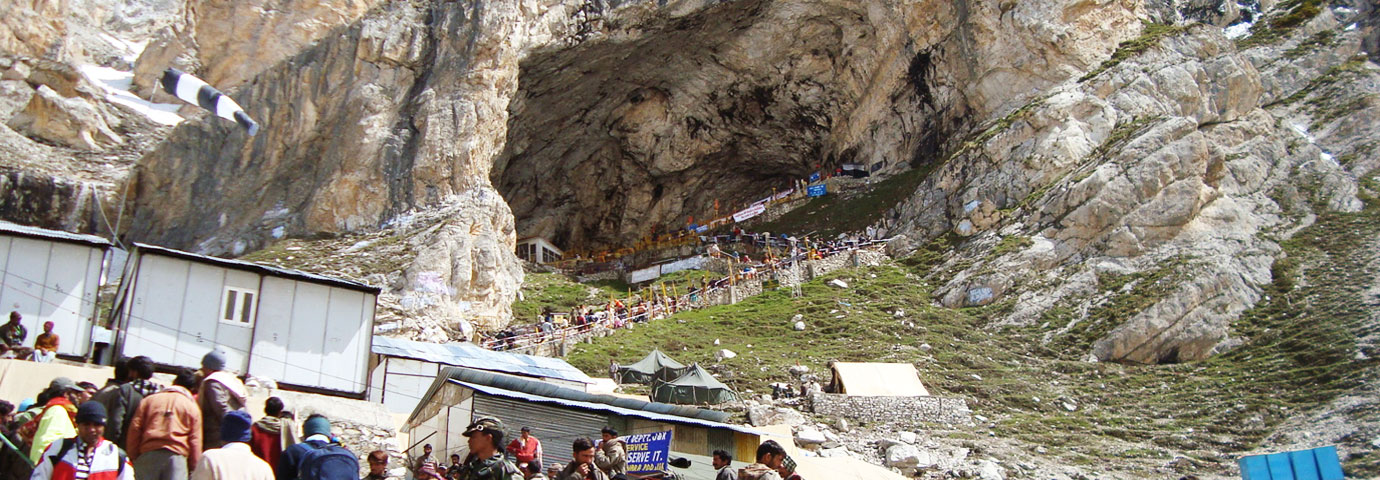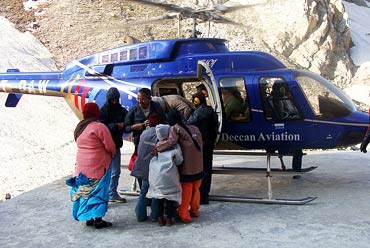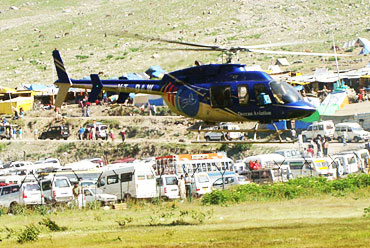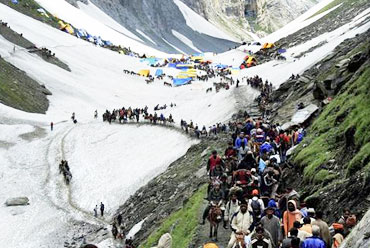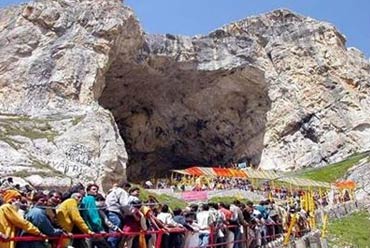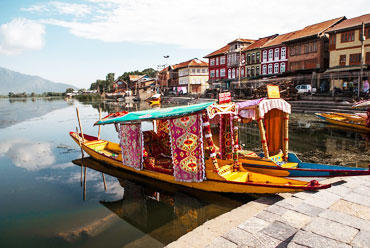Amarnath is among the highly revered sites for Hindus in India. To visit here, a yatra is organized annually by the Govt. of Jammu & Kashmir. It is a famous pilgrimage destination that receives millions of pilgrims from all over the country every year. Amarnath Cave is situated at a height of 5186 meters above sea level and remains covered throughout the snow for most of the year. It is only open for a short period of time in summer when devotees take the Amarnath Yatra to seek the blessings of Baba Amarnath. Due to the high altitude and difficulty of the trek, children below 13 years, seniors above 75 years, and 6 weeks or more pregnant women are exempted from this spiritual journey.
In Hinduism the three most important Gods are Brahma the Creator, Vishnu the Preserver and Shiva the Destroyer. Shiva is mentioned in the Rig Veda - one of the earliest religious books of India and continues to be worshipped to the present day. Shiva is depicted as an ascetic clad in a deerskin. He carries a trident and is accompanied by his consort, the female deity Parvati, and his son, the elephant- headed God Ganesha.
According to legend, Shiva was asked by Parvati to tell her the secret of immortality. He resisted for a long while, however her repeated insistence led to his agreeing to reveal the secret to her. They traveled to an isolated location in the Himalayas, where no one could overhear the secret. On the way Shiva left Nandi the Bull, at Pahalgam (Bail gaon). He released the moon from his hair at Chandanwari. At Sheshnag peak, he released his snakes and Ganesh was left behind at Mahagunas Hill (Mahaganesh Hill). At Panchtarni, Shiva left behind the five elements (Earth, Water, Air, Fire and Sky) and accompanied by Parvati entered the cave. Here he meditated seated on his deer skin. To ensure that no living creature heard the secret he created a fire to destroy all life around him and then began to disclose the secret of immortality to Parvati. However a pigeon's egg hidden beneath Shiva's deerskin remined unharmed by the fire. A pair of pigeons, who overheard the secret of immortality, were born from this egg and even today pilgrims who visit the holy cave can see a pair of pigeons nesting here. Since the secret of immortality (Amar Katha) was revealed within this cave, it came to be known as Amarnath.
Here is the comprehensive Amarnath Travel Guide for you to help you plan your Amarnath Yatra more efficiently.
Climate of Amarnath
The climate along the route to the Amarnath Cave is very cold. Though days may be sunny, rain or snowfall may occur at any time. The night temperature can drop to -5 Degrees Celcius.
Precautions
- Every traveler has to be registered with the government before starting the Amarnath Yatra
- Only physically fit pilgrims should attempt the Amarnath Yatra.
- Acclimatize yourself for a day at the base camp before beginning the trek. The altitude can cause breathing problems while traveling.
- All pilgrims should carry adequate warm clothing.
- Pilgrims should carry nourishing food such as dry fruits, chocolates etc., to consume on the trip
- Comfortable walking shoes, a walking stick, torch, raincoat, windcheater and medical kit are essential supplies on the Amarnath Yatra
- Carry enough money to pay for any additional needs.
- Pay heed to warning signs about falling rocks or avalanches. Only travel with an experienced guide, and with a group of pilgrims.
Amarnath Yatra Registration
All yatris must be registered with the Jammu and Kashmir Government and are issued a registration-cum-identity slip, which they should carry with them at all times.
Amarnath Yatra Route
Around 150,000 pilgrims undertake the Amarnath Yatra every year. A priest carrying the Chari Mubarak or holy scepter of Shiva, leads the yatris up to the cave. There are 2 routes to the holy Amarnath Cave. The routes are as follows:
- Route 1: Srinagar - Pahalgam - Chandanwari - Pissu Top - Sheshnag - Panchtarni - Amarnath
- Route 2: Srinagar - Sonamarg - Baltal - Domail - Barari - Amarnath
Amarnath Story
There is a famous Amarnath pigeon story connected with Lord Shiva and Goddess Parvati.
According to the legend, Parvati asked Shiva to disclose the secret of immortality. He resisted but after Parvati’s continuous insistence, he decided to tell her. He took her to an isolated location in the Himalayas where no one could hear them. En route, Shiva left Nandi - the Bull at Pahalgam at Bail Gaon. He took the moon out from his hair at Chandanwari and at Sheshnag Peak, he took out his snakes, and Ganesh was also left at Magahunas Hill (Mahaganesh Hill).
The five elements - Earth, Air, Water, Fire, and Sky - were left behind and at Panchtarni, Lord Shiva entered the cave accompanied by Parvati. To ensure that no living being heard their secret he created a fire to destroy all the life around him. However, a pigeon egg hidden under Shiva was not destroyed by the fire and they heard the secret of immortality. They were born and even today pilgrims who visit Amarnath Cave see a pair of pigeons nesting here. And since the secret of immortality or Amar Katha was told by Shiva at this cave, it came to be known as Amarnath.

